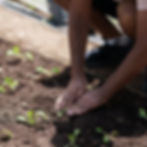Welcome to the Terra Alta Blog: Where the Journey into Permaculture Design and Land Regeneration begins
- Valentina Delconte
- Jun 23
- 4 min read

Welcome to the Terra Alta Blog – a digital space where we share stories of permaculture, land restoration, and community of cultures from our education center in Sintra, Portugal. This series begins with a personal journey—one that brought life back to a forgotten land and built a home for future learning and culture: Terra Alta's journey into permaculture design and land regeneration. So let us begin!
This blog post was inspired by the interview conducted by Jennifer Ready, former facilitator at Terra Alta and Certified Permaculture Teacher, with Pedro Valdju, co-founder and facilitator, in 2024.
A Valley Calls: Discovering Terra Alta
More than fifteen years ago, Pedro Valdjiu and Rita Seixas, the founders of Terra Alta, discovered a long-abandoned valley in the hills of Sintra, Portugal. The area, dense with blackberry thickets and weary cork oaks, had been untouched for decades when they first arrived.
"I realised the land had been left alone for around 50 years,” Pedro remembers. “I could see that the blackberry was doing its job of keeping humans away as well as attracting animals to come and spread seeds, so a certain amount of natural reforestation was already happening.”
They also noticed that soil was really degraded and compacted: “Even after 50 years of abandonment there was still so little soil being built. So you know, it's a good reminder for us to to really be grateful for all the soil that the planet creates, and that the forest has been building for us.” the co-founder reminds us.
Despite the wildness, Rita and Pedro saw promise—a protected place that could become both a family home and a center to foster change across countries.
“Something that was most magical about my connection with this place was that I never thought I was going to fall in love with a landscape in my life because I grew up in a suburban area but then suddenly you fall in love with a place.”
Laying Roots: The Land Regeneration Begins
Driven by a desire to create a meaningful life for their two daughters close to nature and to connect with a like-minded community, the co-founders of the Terra Alta set out to regenerate the land. As Pedro shares:
“What I was also really looking for, which I think many can relate to, was to find my community. When we enter into thepermaculture scene we feel we are not alone, our ideas are shared with many people and maybe a sense of isolation gets transformed into a sense of community.”
Together with trusted friends and collaborators, coming “from different areas and have different forms of experience and knowledge”, Terra Alta core team started to clear paths into the land, saved protected native trees, and began to immerse themeselves in permaculture design.

Their initial approach was a balanced mix between observing the land and targeted interventions:
“Over time I started to plant a lot of tree guilds focussing on companion planting. Later on, we could work with with zone four, zone five, where we started to bring friends and enter the forest, really cleaning and saving trees from being swallowed by vegetation.”
Permaculture has offered Pedro a new perspective on land management, which“can be applied in many contexts such as designing a festival, an event, a community, a business, but when you really engage with designing a homestead you are going to learn a lot."
In this process, they also looked back at the “history of the place." They tapped into old maps of the land and “existing stories from the neighbours”. Pedro shares that
“the further you go back in time,the deeper you can go in designing your own context, your own vision and mission statements, and also your excitement about being on the land. Sometimes this process also shows the healing you have to do because certain lands were really traumatised.”
Terra Alta Today: A Living Permaculture Design Project

Many trials and experiments after, the land has transformed into a healthy oak forest ecosystem, now teeming with biodiversity—from owls in the trees to earthworms in the rich soil. Today, the research and education centre at Terra Alta offers:
Permaculture Design Courses (Learn More)
Bio-intensive and forest garden food production
Appropriate technologies for water and energy
Closed-loop systems: composting, natural fertilization, and fermentation.
All of this is practiced and taught on-site, offering immersive learning and community-based experiences.
It takes a village
“I am also very grateful for the amount of people that I came across because the land is an educational centre and we have been receiving a lot of people here and everybody contributed something unique over the years.” – Pedro says, “It’s a principle of nature, diversity.”
More than just a farm, Terra Alta is a space for art, music, design, and cultural exchange. It’s a hub for storytellers, earth stewards, and regenerative thinkers to share, grow, and co-crea
te a better way of living.
Follow our journey!
This blog aims tol take you deeper into our practices, principles, and people’s experiences—from land restoration to off-grid living, from community building to artistic collaborations.
Whether you’re just discovering permaculture or walking along a regenerative path, follow our journey and stay up to date with our newsletter.

